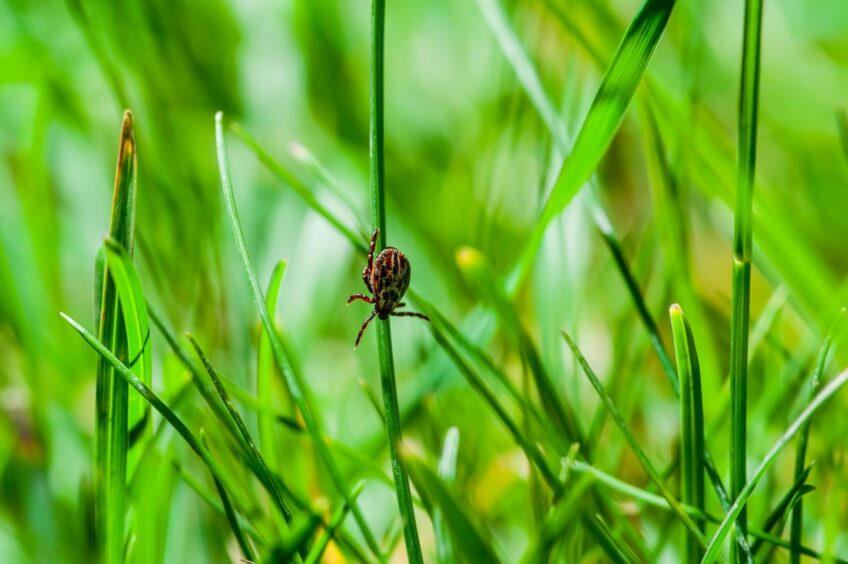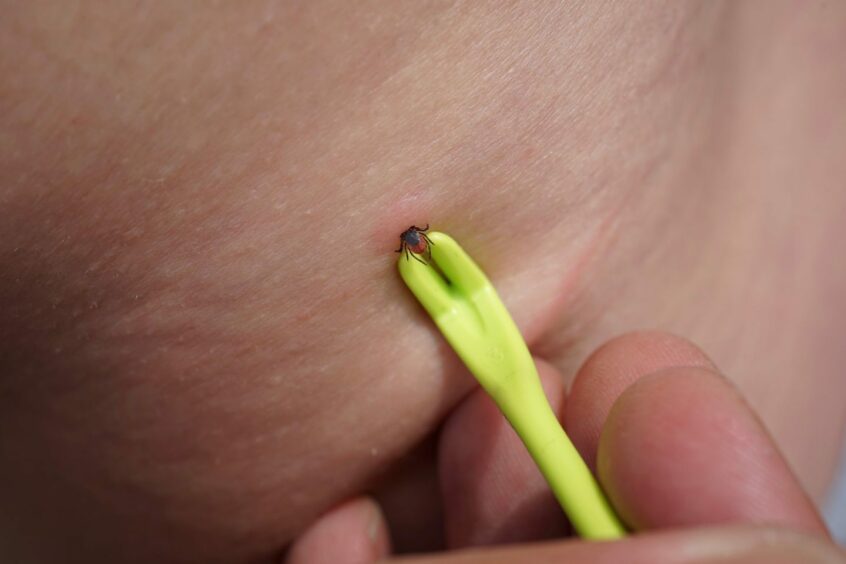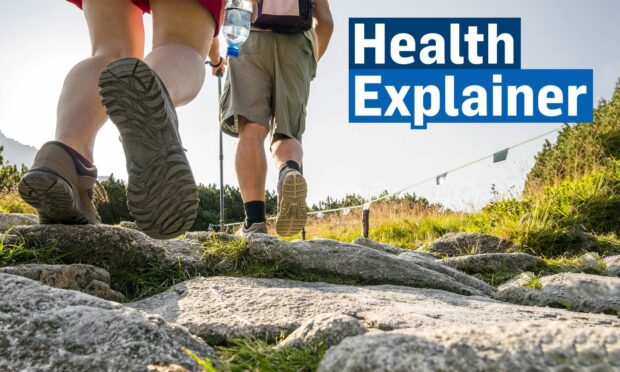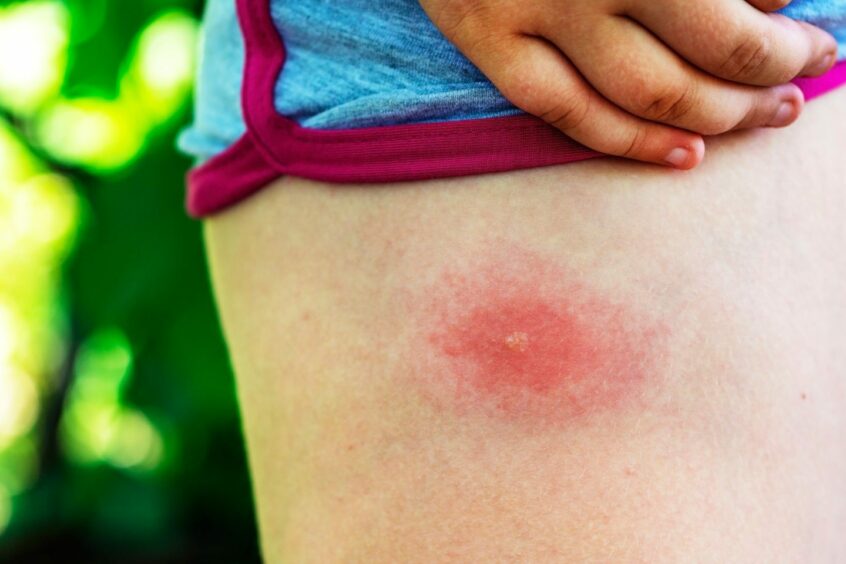A Lyme disease charity has shared a video highlighting the likelihood of being bitten by a tick in Angus and across Scotland.
Charity Lyme Disease UK posted the video on their Twitter account, to raise awareness of the condition and urge locals to be aware as they take to nature this weekend.
Most commonly found in Scotland between March and October, ticks can be a nuisance and can put a dampener on your plans.
When you carry out a 10-second tick drag in Angus! 🏴
There's reason why #Scotland has the highest incidence of #Lymedisease in the UK! 🕷️
Stay safe via https://t.co/R6UansZv6y
🎥 Darren Blythe pic.twitter.com/e1wwY43h7G
— Lyme Disease UK (@UKLyme) July 14, 2022
But how can you avoid catching a tick? What are the dangers of a tick bite? And what should you do if you’re bitten?
We’re answering all your questions as we head into tick season.
How do I avoid catching a tick?
The most common tick in Scotland is the sheep or deer tick. They do not fly or jump, but climb on to animals or humans as they brush past.
They can be found anywhere there is wildlife, usually in woodland and moorland areas in Scotland.
The best ways to avoid ticks include:
- Walking in the centre of a path and avoid long grass of wooded areas
- Wearing long sleeved tops and avoid shorts if possible
- Tucking trousers into socks or shoes
- Using tick repellent before going out

When you return from a walk, you should check yourself and your clothing for ticks. The places ticks are most commonly found on the body are:
- Under the arms
- Around the ears
- The groin
- The belly button
- Back of the knees
- In the hair
- Waist
Ticks try to get to the warmest parts of the body, but can be found anywhere, so it’s important to have a thorough check.
You should also wash clothes after being out for a walk before wearing them again, in case any ticks are attached to the material.
What should I do if I find a tick?
If, despite your best efforts, you find a tick in your skin. You should remove it immediately.
The best way of doing this is by using a dedicated tick removal tool or tick tweezers. These can be bought in shops such as Boots, Tresspass, or Pets at Home for four-legged friends.

You can also get them online from the likes of Amazon.
For more advice on how to remove a tick bite, visit NHS Inform.
Are Scottish tick bites dangerous?
In Scotland, the most common disease ticks transmit is Lyme disease. It’s usually easier to treat if it’s diagnosed early.
A circular or oval shape rash around a tick bite can be an early symptom of the disease.
Some people also get flu-like symptoms a few days or weeks after they were bitten by an infected tick.
Although Lyme disease is rarely life-threatening, delayed treatment can result in more severe disease.
Not all Scottish ticks carry it, but it’s important to be aware of the symptoms.
If you think you have Lyme disease, you should visit your GP as soon as possible. They will most likely prescribe antibiotics to clear up the infection.












Conversation